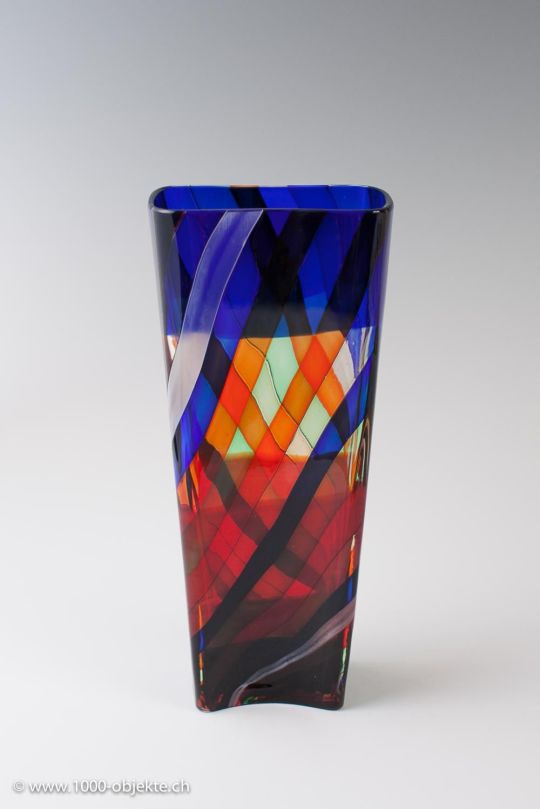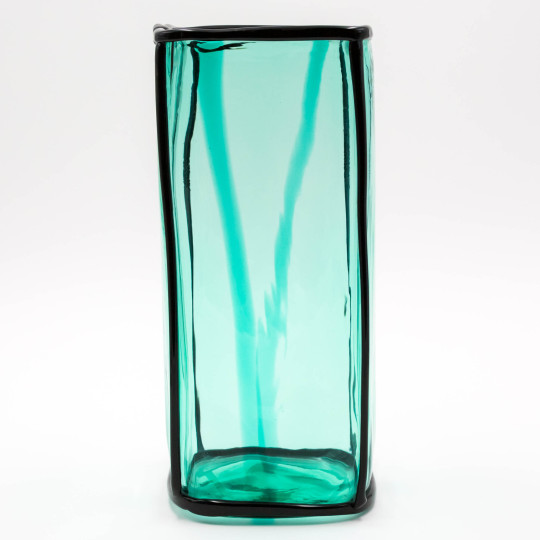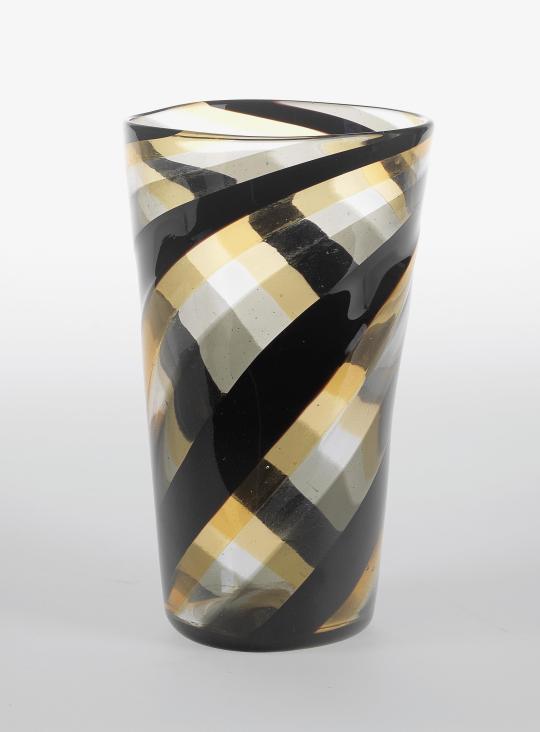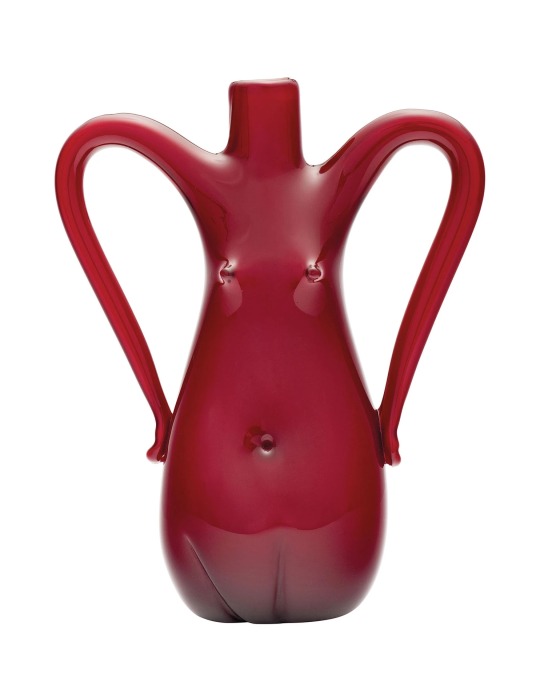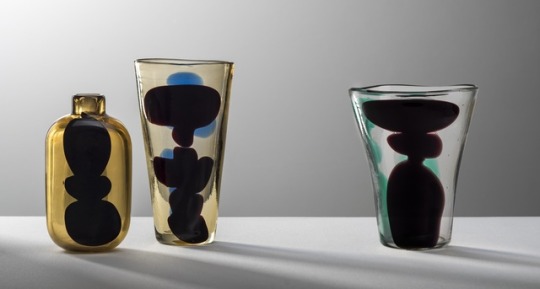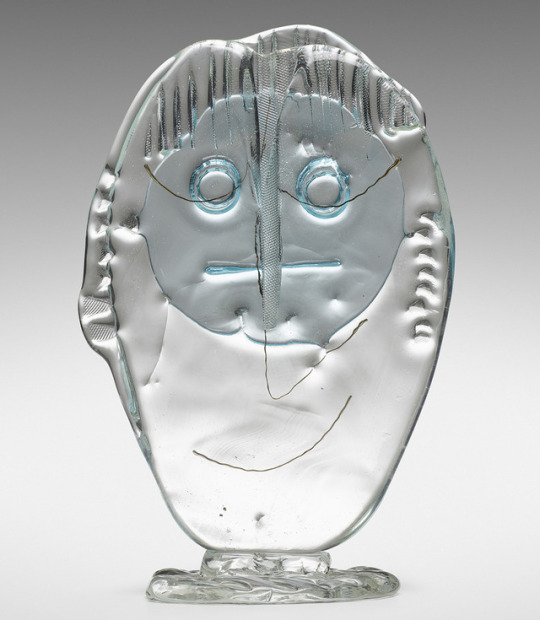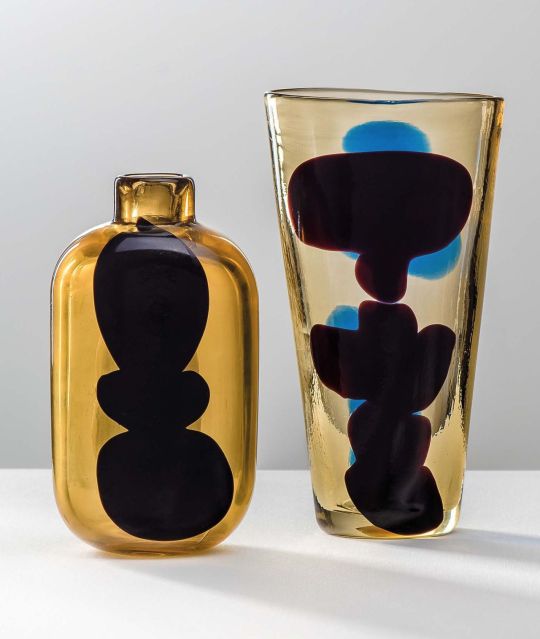#Fulvio Bianconi
Photo






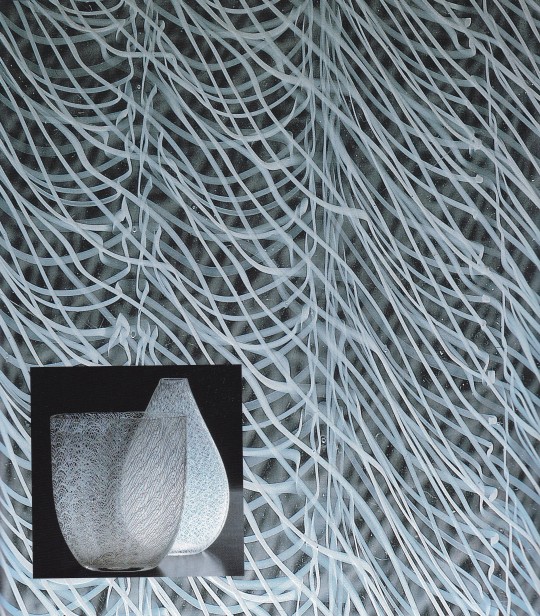



Murano Fantasie di vetro
Marina Barovier
Introduzione di Attilia Dorigato
Arsenale Editrice, Venezia 2008, 60 pagine, 48 ill. colori, brossura, 22 x 24 cm, ISBN 9788877431424
euro 12,00
email if you want to buy :[email protected]
Galleria Marina Barovier, Venezia 3 settembre - 29 ottobre 1994
60 esemplari eccezionali in vetro mosaico, a tessere e a canne dei più noti maestri e designer prodotti tra il 1920 e il 1960 nelle fornaci muranesi.
Accanto al vetro soffiatissimo, trasparente e quasi impalpabile dalle tenui colorazioni, che dà corpo a forme di rigorosa semplicità, ma di grandissima raffinatezza, i primi anni del nostro secolo, a Murano, sono testimoni anche dell’incondizionato successo del vetro morsico, noto pure col termine, improprio tuttavia, di murino. Al fascino del vetro murino non hanno saputo resistere artisti quali Vittorio Zecchin, Carlo Scarpa, Fulvio Bianconi, Riccardo Licata e Mario De Luigi, che hanno creato tessuti vitrei assolutamente inediti, nei quali la forma stessa della tessera di vetro veniva pensata in funzione precisa dell’oggetto e delle sue intonazioni di colore. Canne vitree di colori e dimensioni diversi, intrecciate spesso in complessi viluppi, con eccezionale abilità, hanno costituito tessuti vitrei vivaci quanto quelli in vetro mosaico. È a queste Fantasie di vetro che Marina Barovier ha rivolto la propria attenzione nell’ultima delle sue esposizioni, selezionando, ancora una volta, quanto di meglio Murano ha prodotto in questo settore, nel nostro secolo.
20/01/23
orders to: [email protected]
ordini a: [email protected]
twitter: @fashionbooksmi
instagram: fashionbooksmilano, designbooksmilano tumblr: fashionbooksmilano, designbooksmilano
#Murano#Fantasie di vetro#glasses exhibition catalogue#Galleria Marina Barovier Venezia 1994#vetro mosaico#vetro a tessere#vetro a cannae#vetro murino#Vittorio Zecchin#Carlo scarpa#Fulvio Bianconi#Riccardo Licata#Mario De Luigi#tessuti vitrei#glasses books#designbooksmilano#fashionbooksmilano
7 notes
·
View notes
Text
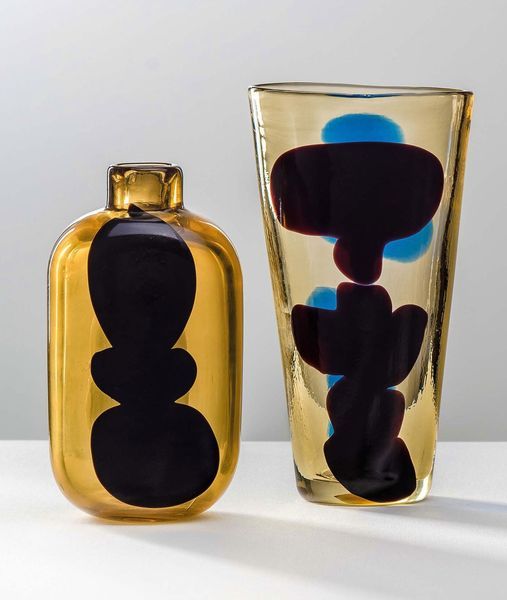
FULVIO BIANCONI, A Macchie, bottle and vase, 1950. Material amber glass with colored a macchie inclusions. Manufactured by Venini, Italy.
94 notes
·
View notes
Photo

Fulvio Bianconi, Glass bottle, 1955. Blown glass. Made by Venini & Co. Via Maas Museum.
The Paduan artist Fulvio Bianconi joined the Venetian glassworks in about 1948 and was its most influential designer throughout the 1950s. His figures, sculptural vases and vessels decorated with abstract patterns, often inspired by modern art, brought Venini recognition at the Venice Biennale and Milan Triennale.
150 notes
·
View notes
Photo
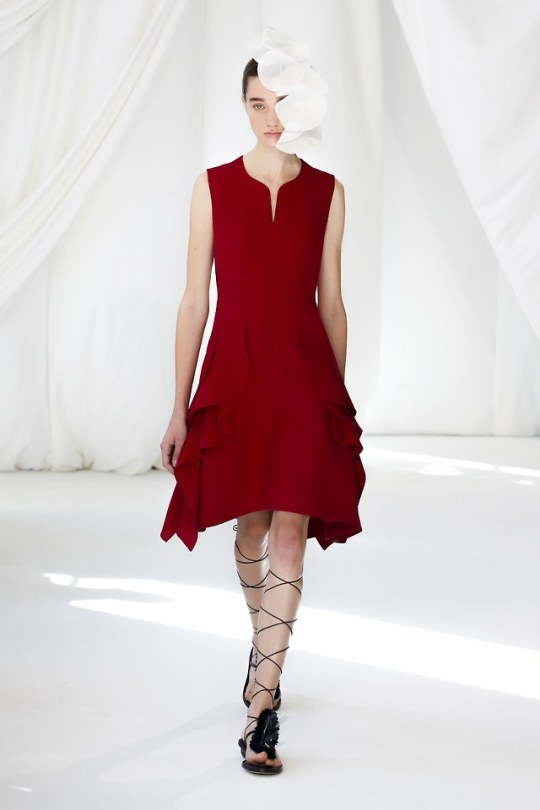
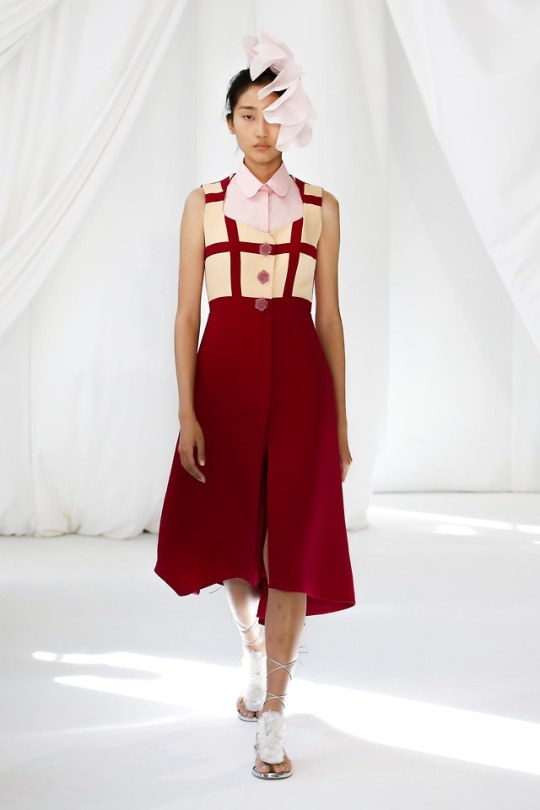



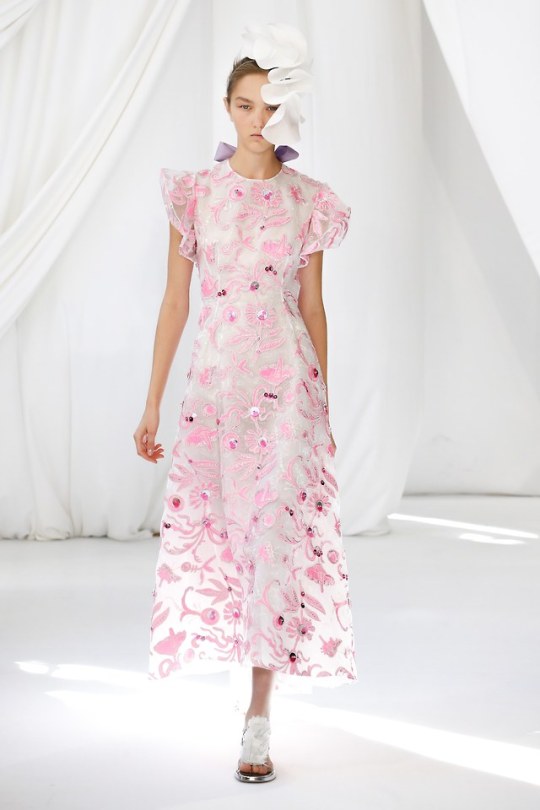

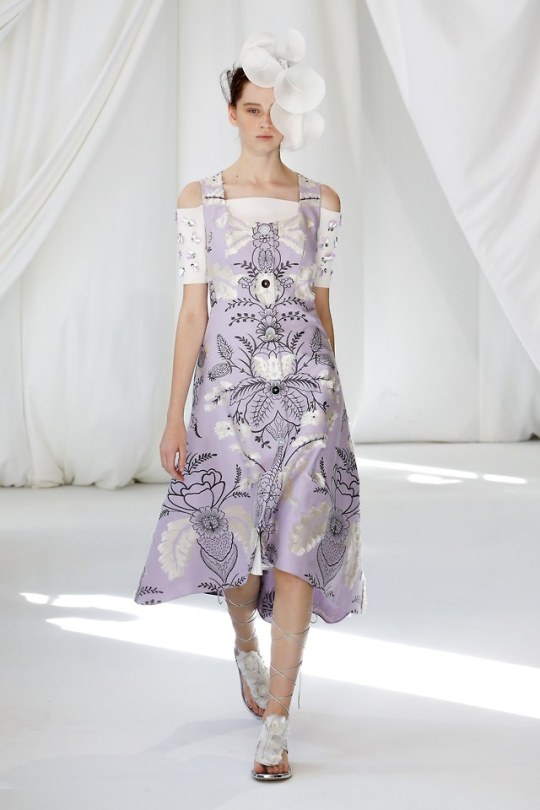


Delpozo Spring 2019 Ready-to-Wear
#fashion#delpozo#spring 2019#ready-to-wear#scopophobia /#favorite#inspired by the work of glass artist#fulvio bianconi#it's gorgeous and sort of a new direction for delpozo#although it remains very true to the brand's architectural core#but i am going to complain as usual about ONLY ONE BLACK MODEL#you cannot justify this in 2018#you can't
1 note
·
View note
Photo

Fulvio Bianconi, “Informale” vase, Venini Italy, 1968,
Anthropomorphic Modeled, Glass, 10.5 w x 10.75 d x 17.5 h inches.
#art#design#sculpture#glass#abstract#form#venini#italy#fulvio bianconi#minimal#green#anthropomorphic
92 notes
·
View notes
Photo


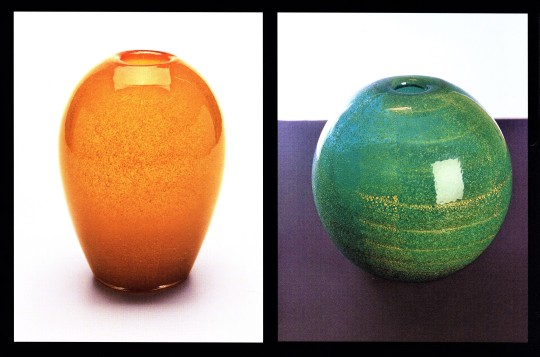
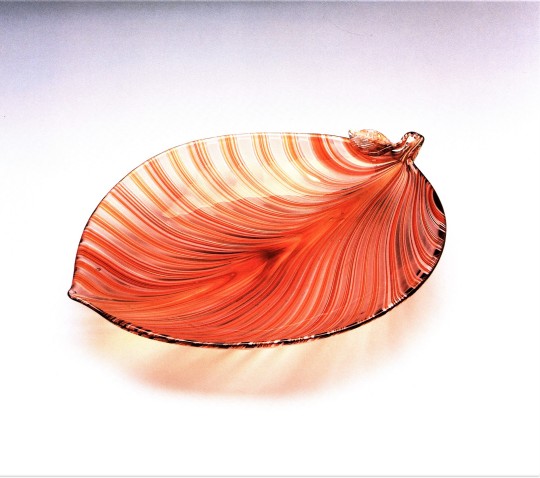





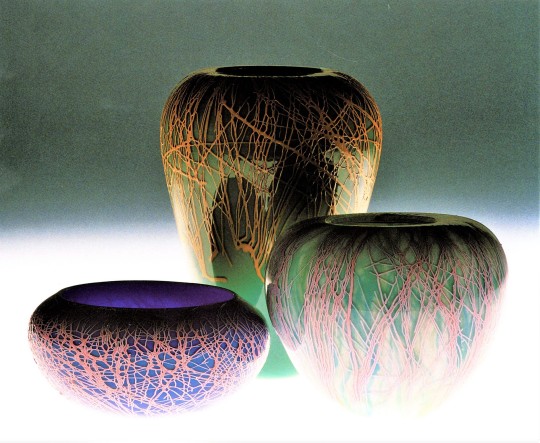
Milestone Monday
On this date, November 8 in 1291, The Republic of Venice enacted a law confining most of Venice's glassmaking industry to the island of Murano. Venetian glassmaking goes back at least as far as the 9th century CE, as testified by an early record, dated 982, containing the first known mention of the name of a glassmaker. While Venetian glassmaking may have originated with the Romans, its ties with medieval Islamic and Byzantine glass production were essential to its becoming, in the 12th century, a highly refined art. By then, Venice had become the glassmaking center of Europe, but the furnaces used to make glass were a potential fire hazard to Venice’s wooden structures, so with the 1291 law, all glassmakers were impelled to remove to the cluster of linked islands known as Murano 1.2 miles north of the city center. There the industry continued to thrive and Murano remains a glassmaking center to this day.
To commemorate this milestone event, we are posting images of 20th-century glassware by the fabled Murano glassworks of Venini, from Venini: Catalogue Raisonné, 1921-1986, edited by the daughter of the company’s founder Anna Venini Diaz de Santillana and published in Milan by Skira in 2000. The name Venini is deeply rooted in the great Murano tradition of glass craftsmanship. The book is an in-depth account of the company established by Paolo Venini in 1921 and carried forward by members of the Venini family up to 1986 when the business was sold off. This comprehensive catalogue contains some 250 descriptions detailing each item produced over six decades of activity, with Anna Venini Diaz de Santillana tracing the history of the 'Vetrerie Venini' glasshouse through each successive master craftsman's term as art director: Napoleone Martinuzzi, Carlo Scarpa, Paolo Venini himself, Tomaso Buzzi, Fulvio Bianconi, and Ludovico Diaz de Santillana. From top to bottom, the works shown here are:
1.) Tomaso Buzzi. Two-spouted vase, 1933.
2.) Napoleone Martinuzzi. Large leaf chandelier, 1928-30.
3.) Carlo Scarpa. 'Sommerso' bubble vases, 1934.
4.) Tyra Lundgren. Leaf, 1938.
5.) Ludovico Diaz de Santillana. 'Murrina' disc, 1962.
6.) Laura Diaz de Santillana. 'Klee' vase, 1978 and Alessandro Diaz de Santillana. 'Coccio' vase, 1984.
7.) Carlo Scarpa. 'Murrina' plates, 1940.
8.) Toni Zuccheri. 'Giada' vase, 1964.
9.) Tomaso Buzzi. 'Alga' vase, 1933.
10.) Toots Zynsky. 'Folto' vases, 1984.
View our other Milestone Monday posts.
#Milestone Monday#milestones#Murano#Murano glass#Venetian glass#Catalogue Raisonné#Venini#Anna Venini Diaz de Santillana#Skira#Paolo Venini#Tomaso Buzzi#Napoleone Martinuzzi#Carlo Scarpa#Tyra Lundgren#Ludovico Diaz de Santillana#Laura Diaz de Santillana#Alessandro Diaz de Santillana#Toni Zuccheri#Toots Zynsky#glassware#glassmaking#glassmakers#Venice
121 notes
·
View notes
Photo
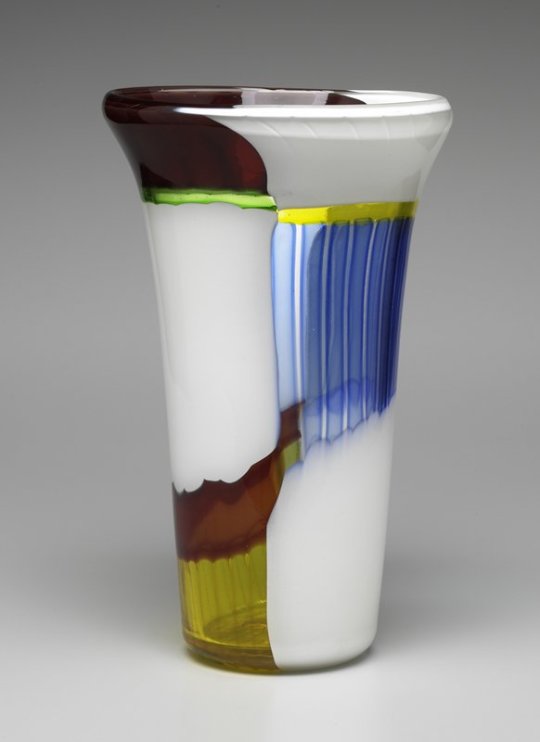
Vase, Anzolo Fuga, c. 1952, Minneapolis Institute of Art: Decorative Arts, Textiles and Sculpture
white, thick walled vase with 3 patches of color: yellow and brown at bottom, blue and yellow at center, and red and green at top In the 1950s, Italian glass artists became more adventurous with their techniques. The patchwork method employed in this vase became popular through the work of Anzolo Fuga for A.V.E.M. and Fulvio Bianconi for Venini (seen nearby). The technique involves laying down colored and clear glass rods that are fused together into a plate, which is then heated and formed into a vase. While Bianconi’s patchwork vases were composed of small colored, white, and clear squares, Fuga’s work, as seen in this vase, has a more dramatic contrast between large sections of opaque white and colored glass—the composition is akin to a modern abstract painting.
Size: 15 1/4 x 9 5/16 x 9 5/16in. (38.7 x 23.7 x 23.7cm)
Medium: Fused and blown glass
https://collections.artsmia.org/art/53605/
3 notes
·
View notes
Photo
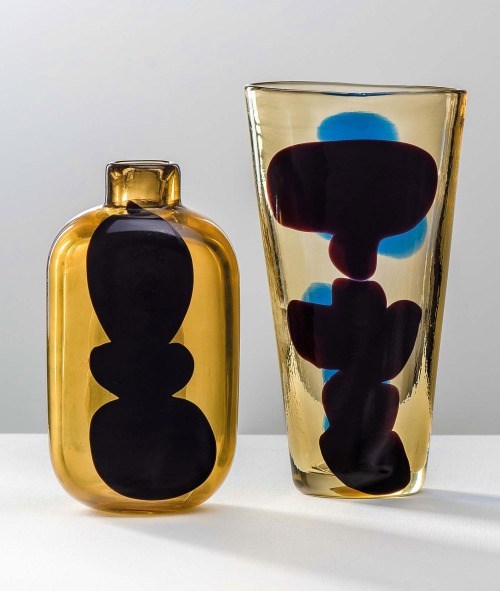
FULVIO BIANCONI, A Macchie, bottle and vase, 1950. Material amber glass with colored a macchie inclusions. Manufactured by Venini, Italy. / Daily Apple.
68 notes
·
View notes
Text
VENINI - Venedigs Glanz im Glas: Frauenau bis 22.03.2019
VENINI – Venedigs Glanz im Glas: Frauenau bis 22.03.2019
VENINI– der Name der italienischen Glasmanufaktur steht wie kein anderer für Glas aus Venedig. Die Wurzeln dieser ruhmreichen Manufaktur reichen zurück bis ins Jahr 1925, als Paolo Venini (1895 – 1959) zusammen mit Napoleone Martinuzzi und Francesco Zecchin das Unternehmen gründet. Als ein aus Mailand stammender Anwalt war sein Erfolg in der Welt des Glases nicht unbedingt vorbestimmt. Doch er…
View On WordPress
#Carlo Scarpa#Francesco Zecchin#Fulvio Bianconi#Galsdesign#Glas#Glasgefäß#Glaskultur#Glaskunst#Glasmanufaktur#Glasmuseum Frauenau#Glastiere#Glasvase#LE STANZE DEL VETRO#Napoleone Martinuzzi#Paolo Venini#Tobia Scarpa#Tyra Lundgren#Venedig#Venini
0 notes

